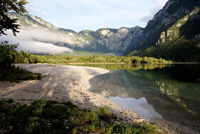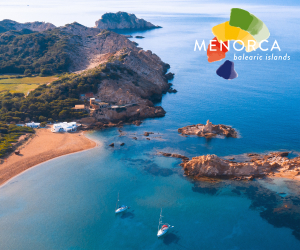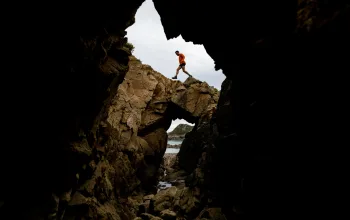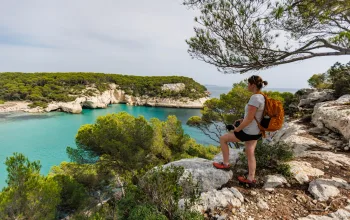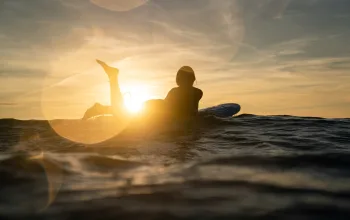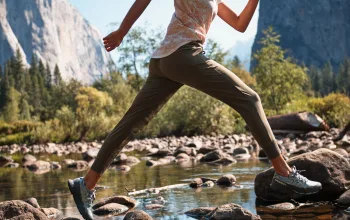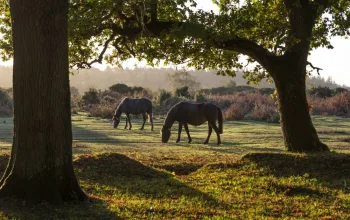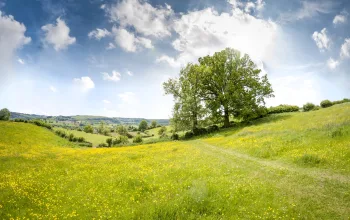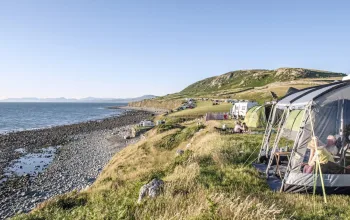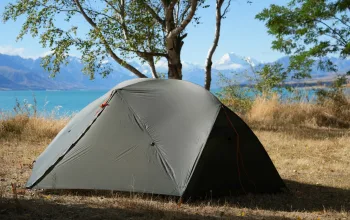Slovene Secrets
It is one of those real tantrum tears moments. I feel my eyes oozing as we turned our backs on the trail that would lead us to the peak of Prsivec at over 1,700m. Ominously dark clouds threatened to close in on our hiking group, and our guide, Matic, advises us to turn back and walk along the gorge in the Bohinj valley rather than attempt another five hours’ of possibly miserable hiking in a downpour. I am the only one of our group obstinate and stupid enough to want to soldier on. Not because of the lure of ‘bagging’ a peak, but I feel somehow compelled to keep going.
That’s the kind of magic that Bohinj, in the foothills of the Julian Alps, exerts over you. The backdrop of the Julian Alps, includes Mount Triglav - the highest peak in Slovenia at 2864 m, the glassy tranquillity of Lake Bohinj set in a valley carved out by the Bohinj glacier over 14,000 years ago and the birch and pine forests and the fields of wildflowers – it’s easy to see why this area was designated the Triglav National Park - Solvenia's only national park.
Slovenia is the third most densely populated country in Europe, by trees that is, which blanket over 50 per cent of the landscape. There’s a population of only 2 million Slovenes, and they are the ones you’re most likely to stumble across on hiking trails. The area is still largely undiscovered by Brits, although most people speak English, so language isn’t a problem.
It’s refreshing that you’re deeply unlikely to find British-style fry ups here, or even sometimes an English translation of the menu. Slovenian food is hearty, and varies between localities, influenced by its Italian, Austrian, Hungarian and Croatian neighbours. Meat features heavily on the menu, as do pasta or dumplings, salads, sauerkraut and nutty cakes. The ubiquitous wild blueberry firewater is an aperitif to lunch and dinner, and can be sweet or quite strong, a bit like Grappa. Wine is surprisingly delicious, and it is possible to quaff fruity Reislings, Pinot Noir and Muscat. The oldest vine in Europe is in the town of Maribor, in the east of Slovenia, where there’s a museum and you can do wine tastings.
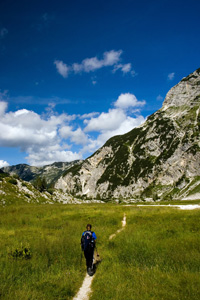 We descend from our picnic spot at the top of Vogar (1,050m) on a plateau above Bohinj. And as we pass the holiday cabins of well-heeled Slovenes, Matic and our other guide joke about the Slovenian tongue-in-cheek tradition that over 1,000m it’s okay to ‘sin’ and over 2,000m it’s basically a must-do. Now we’re tramping down winding, mulchy trails into the gorge, the teasing and giggling of the group has a relieved air about it – call us prudes but it’s not what we signed up for when we decided to come hiking here.
We descend from our picnic spot at the top of Vogar (1,050m) on a plateau above Bohinj. And as we pass the holiday cabins of well-heeled Slovenes, Matic and our other guide joke about the Slovenian tongue-in-cheek tradition that over 1,000m it’s okay to ‘sin’ and over 2,000m it’s basically a must-do. Now we’re tramping down winding, mulchy trails into the gorge, the teasing and giggling of the group has a relieved air about it – call us prudes but it’s not what we signed up for when we decided to come hiking here.
Mostnica gorge is as spectacular as promised. The jade water swirls and eddies down the canyon and is clear and clean enough to quench our parched throats with. The water is icy, and in the summer Pac Sports (pac-sports.com) and Alpin Sports (alpinsport.si) provide instructors that can take you canyoning and rafting down it. Other summer activities in Bohinj are mountain biking, paragliding, rock climbing and horse-riding. Or, if you are tired of all the exertion, you can simply take a tourist boat tour on Lake Bohinj. The barge-style boat runs on an electrical engine and has a guide to point out interesting features along the way.
We carry on by the canyon, along a trail dividing pastures dotted with rainbow-coloured wildflowers – poppies, cowslips, lily of the valley, forget-me-nots, indigo gentian, primula and more – to reach the large Savic waterfall at the end of the valley. After a drenching by the waterfall, we rest at a refuge and drink Zlatorog lager (about £1 each) and eat delicious, light, homemade apple strudel.
Matic tells us stories about the area as we’re trudging though the forest on our way back to Bohinj village. We hear about the mystery of the train that is rumoured by folklore to be sunk at the bottom of Bohinj Lake. Bohinj was not far away from the front line against the Italians in WW1, and cable car and single gauge railway were built to bring supplies up the troops. More mystical is the story of how Hudic (devil) bridge got its name - A local man made a deal with the devil, who wanted the first soul that crossed the bridge in return for villager’s being able to cross. The man sent his little dog over, tricking the devil.
If you’re the kind of ambler that enjoys learning about your environs, Bohinj has several themed trails, such as the cheese trail, wildflower trail and the WW1 route – as well as the 28km of ordinary marked trails and walking festivals. The best way to explore is with a guide, booked through the tourist board in Bohinj, although trails are marked with paint and the occasional signpost, and there is a map of trails available. Various guided walking events are planned.
Back at the hotel, my feet are aching so much after seven hours and 22km of hiking that I put them up and promptly fall asleep before dinner. Not used to all that fresh air, as a Londoner, my lungs feel thoroughly cleansed and my shoulders relaxed. Having had a taste of hiking and generous Slovene hospitality, I have my sights set on climbing Triglav (2,864m) and stay in refuges on the way. It’s a two or three day non-technical climb (not requiring crampons or ice axes) and the Slovenians have a saying: “You’re not a Slovenian if you haven’t climbed Triglav”.
Other hiking spots in Slovenia...
Whereas the Julian Alps in the northwest are the obvious choice for hiking in Slovenia other parts of the country have their own allure. So hire a car and check these out:
Slivnica Hill - translated as Witches' Hill - is found in the southwest of the country and is a three-hour moderate walk that culminates in stunning views over a vast lake - the biggest in Slovenia - called Lake Cerknica. The hill was said to be where local witches were banished to live. Access to the hill is near Rakow Skocjan, where there's basic but clean walking hotel that can arrange guided walks.
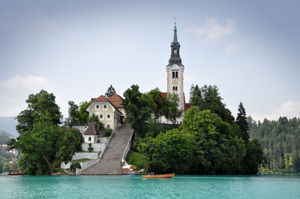 Lake Bled is a fairytale beauty and for the sight alone, it's worth coming to this corner of Slovenia. If you're one for taking restorative waters - you can do it here - and there's one of the most elegant, modern restaurants in Bled Castle serving delicacies such as wild boar and a memorable melt-in-the-middle chocolate dessert. Work it off by tramping the gentle trails in the surrounding woods.
Lake Bled is a fairytale beauty and for the sight alone, it's worth coming to this corner of Slovenia. If you're one for taking restorative waters - you can do it here - and there's one of the most elegant, modern restaurants in Bled Castle serving delicacies such as wild boar and a memorable melt-in-the-middle chocolate dessert. Work it off by tramping the gentle trails in the surrounding woods.
Lasko is an oasis of tranquility in the Posavje Hills, in the east of Slovenia. The four-star and funky Hotel Wellness Park Lasko is situatied right on the Savinja river, and has a natural thermal spa. You can walk in the surrounding wooded hills that are steeped in myths, and visit churches and waterfalls. Plus the hotel does an out-of-this-world iced coffee.
Cerkno is quite a big ski resort in the winter (by Slovenian standards) and the family-run Hotel Cerkno will do just about anything to keep their hikers happy. They'll ferry you around so you don't have to traipse past the eyesores of ski lifts. Above Cerkno you can reach on of the national long-distance hiking trails runs all the way from the Adriatic to the northeast corner of the Julian Alps.
Rogla is another ski resort, but it has outstanding (if slightly outmoded-looking) sports facilities that cater for national teams, including an altitude simulation room. There are some pleasant, gentle strolls you can do from here that take you through pine woodlands and bushy boardwalked bogs to emereald lakes. Three-star Hotel Rogla has an assortment of defferent 'Wellness and Sport' programmes.
The Slovenians revere Nordic walking as a super way to keep fit, as you can burn up to 40 per cent more calories thatn with normal walking because your upper body is also involved in propelling you along. Smarje Toplice is a good place to do it, especially if you want to go to a health farm. There, Hotel Smarjeta ws the first thermal spa hotel in Slovenia and has very sophisticated programmes for fitness and weight loss.
FACTBOX
Getting there: Fly Easyjet to Lujbljana from London, starting from £24.99 one-way.
Activities: One day’s guiding is around £70 for a group.
Stay: Hotel Bohinj is a four-star hotel with spacious suites and room to put your outdoors equipment. Prices start from £34 per person per night half-board. There are a lot of other options in Bohinj, including three-star hotels, guesthouses, and two campsites.
For more info on Bohinj Click Here!
Also check out I Feel Slovenia which includes info on hotels that are hiker-friendly and routes.


